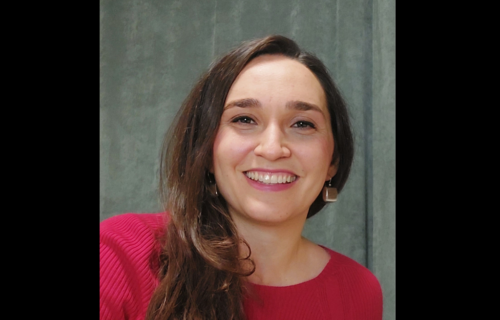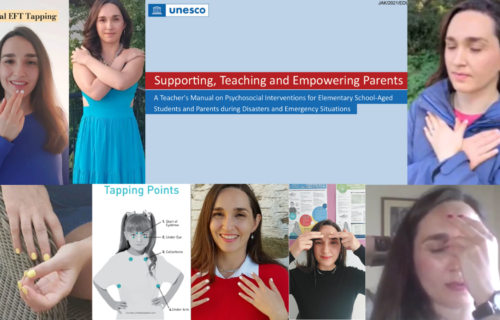
TOK Essay Editing Tips for IB Students
WHAT’S THE ISSUE: How do you overcome the self-doubt that creeps up when you are editing your TOK essay? Hi, I’m Eleni Vardaki. I’ve taught well over 300 TOK students (I stopped counting when it crossed 300) over the last 10 years. My TOK students who applied all my TOK essay writing and editing tips got As and Bs. In this article I share with you 3 of my tips for TOK essay editing that you can apply to your draft before you had it into your TOK teacher.

TIP No 1: Narrow Down your TOK ESSAY Introduction
Step number 1: Improve your introduction.
Your job in a TOK Essay is to narrow down the focus to particular Areas of Knowledge and disciplines (depending on the instructions for your chosen title). One of the mistakes I see students making in their TOK introductions is to try and start with a general introduction – and they wait until the end of the introduction (if that) until they state what disciplines and Areas of Knowledge they’re going to be focusing on.
Maybe you’ve started your introduction off with an inspiring quote, or a general point about knowledge to ‘catch the attention’ of the examiner.
Let me ask you something: Where in the TOK Essay mark scheme does it say you get bonus points for making a generic start to your essay, where you don’t state your arguments clearly?
You’ll notice that in the Level 2 range (i.e. below a C, meaning you’re more likely to get a D than a C…), it says “Arguments are…unclear”, and the key words that characterize this type of TOK essay writing include “basic” and “undeveloped” (See TOK Essay assessment rubric, below).
So what’s in your best interest: starting strong with a clear introduction where you state your chosen Areas of Knowledge and disciplines in the first sentence, right off the bat, after which you go straight into stating your argument (i.e. the three, four or five key points where you state the knowledge problems) before you even finish your introduction?
Or handing in a basic introduction that states no knowledge problems and counter-claims, has no argument, and tries to simply catch the examiners attention in a more irrelevant, general, basic way?

TIP No 2: LINK YOUR TOK ESSAY TOPIC SENTENCES TO ALL ASPECTS OF YOUR CHOSEN TOK ESSAY TITLE
Step number 2: Improve your topic sentences (the opening sentences of your body paragraphs).
The biggest mistake I see IB Diploma students making when I’m marking the first draft of their TOK Essay is they don’t link all of their body paragraph opening sentences to ALL of the key words in their chosen TOK essay title.
This is big. Because if you don’t, 9 times out of 10, it means your topic sentence is either partially or completely irrelevant.
At worst, this can mean you get a D or an E on your TOK essay (unless you change it – now – to make sure you are being fully relevant to the title).
At best, you can get a C on your TOK essay, if your essay is only partially relevant to the title. So if you’re aiming for a B or an A, making sure your essay is fully relevant to the title is essential. And keep your eye on the Level 1 and 2 success criteria of the mark scheme (see TOK essay assessment rubric, above).
Let me give you an example. Say you’ve chosen a TOK Essay title where the two key works are the TOK concepts of facts and theories, and where what the question is asking you to do is to examine the relationship between these two TOK concepts, by choosing relevant examples from two Areas of Knowledge.
But all you’ve done is talked about facts, in the opening sentence of your first body paragraph. Then in the second part of you talk about theories. I see this happening, a lot, because students think that it’s okay to only focus on one of the TOK title key concepts at once. This is a very high-risk approach, or assumption, to make, because at the end of the day, the title is (at it’s core) asking you to explore the relationship between facts and theories. So if you want to have a chance of getting into the A/B Grade range, you’re best off respecting that demand by staying fully relevant to the full demands of the title – not to 50% of the title – in all of the points you make.
I also advise making all of your key points in the opening sentences (the first sentence) of all of your body paragraphs, because that takes care of another one of the assessment criteria the TOK Essay examiner is looking for when deciding what grade to give your essay: how well organized/structured is your essay.
TIP No 3: REMOVE OVER-GENERALIZATIONS
Step number 3: Tone down any points (both in the topic sentences and in the content of your body paragraphs) that can come across as being over-generalizations.
Having sentences that have not been fine-tuned to explicitly focus on your chosen Areas of Knowledge and precise disciplines can come across (in the TOK Essay Examiner land) as over-generalizations.
The way around this is to edit and fine-tune your topic sentences so that they are addressing the precise knowledge area (or even better – the precise discipline) that you said you would be focusing on in this essay in your introduction.
Let’s imagine you’re writing your TOK Essay, and let’s go back to that example of a TOK essay title that asked you to examine the relationship between facts and theories in knowledge production in two Areas of Knowledge.
Let’s say you’ve chosen History and the Natural Sciences as your two Areas of Knowledge from which to draw examples from to create your 4 or 5 key points for your TOK essay. Then you’d go into your topic sentences and edit the words “facts” and “theories to fine-tune them: “historical facts” versus “scientific facts”, “historical theories” versus “scientific theories”.
If you don’t do that, TOK Examiners tend to see those kinds of points as over-generalizations, because they come across as if you’re making claims about ALL facts and theories in knowledge.
ABOUT THE AUTHOR

Eleni Vardaki is an IB alumni and IB History and TOK teacher turned professional Youth Mentor for Stress Relief and EFT Practitioner. She works online supporting students, parents and teachers who want to work on reducing their stress, anxiety or procrastination.




